In August, the heaths of lowland England and the moors of Wales, northern England and Scotland become a shimmering sea of pink and purple, created by billions of tiny heather flowers.
The heath or heather family is known as Ericacae, a selection of flowering plants that thrive in surprisingly infertile conditions.
You'll see heather speckled across the moorlands, heathlands and even boggy vegetation in Europe. The shrubs are also easy to grow yourself and will help nurture wildlife-friendly gardens, as the flowers are rich in nectar and attract bees.
Interested in learning more about Britain's flora? Check our our guides to British trees, wildflowers and blossom.
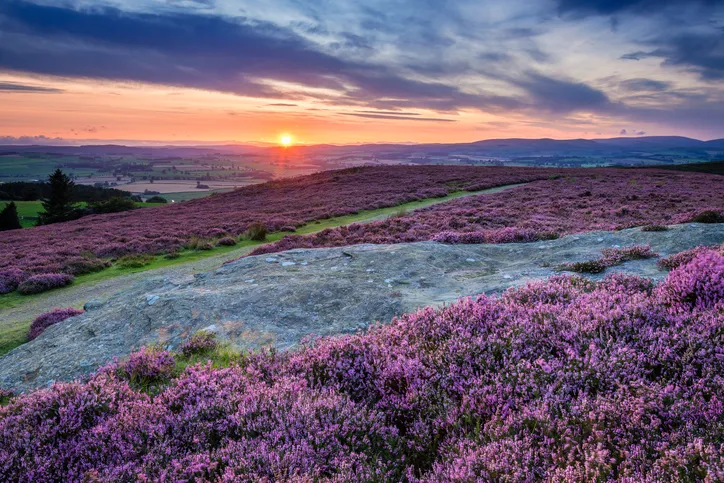
What is heather?
Heather is a purple- or pink-flowered shrub that grows particularly abundantly on the moorlands and heathlands of Europe. Sprigs of heather are particularly favoured in Scotland, where they are considered lucky and are sold as charms.
How many species of heather are there in the UK?
There are three common species of heather in the UK – ling, bell heather and crossed-leaved heath – all tough, low-growing shrubs needing acid soils, each with subtly different features and habitat preferences.
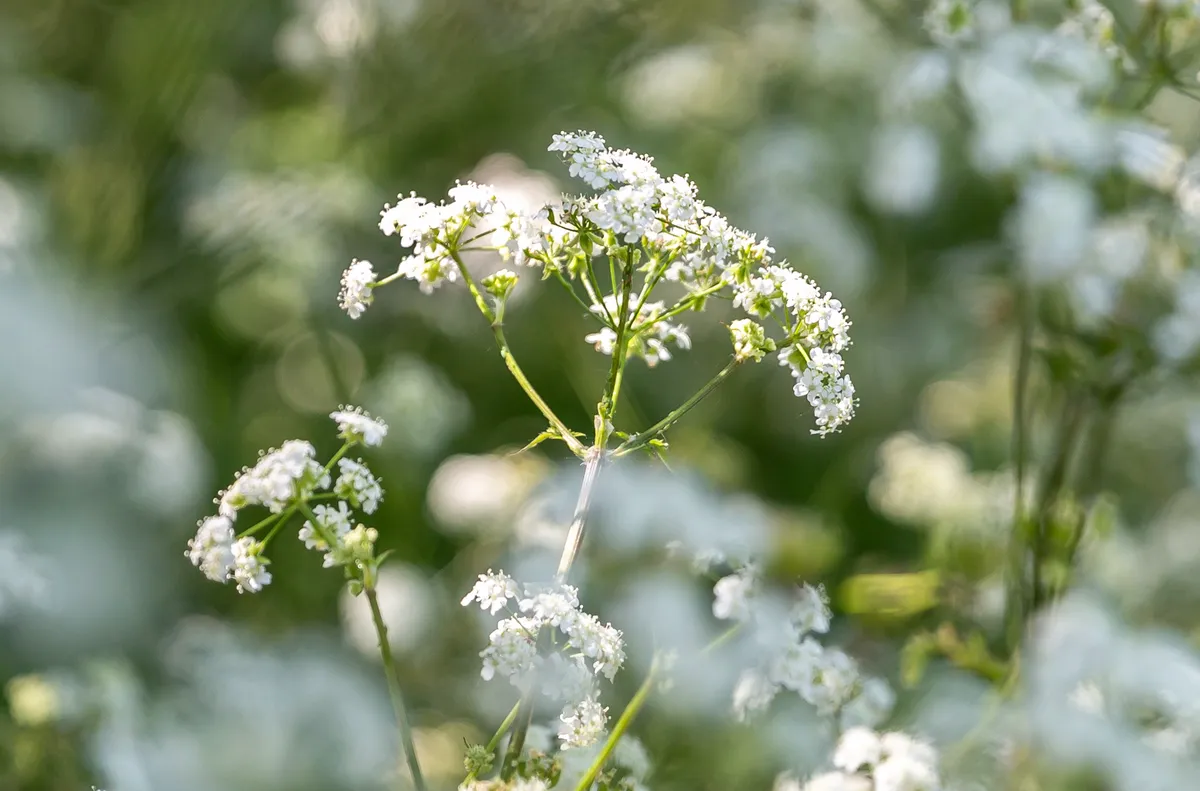
How to identify heather
Generally, heather is made up of woody, coarse stems, tightly grouped together. Their delicate purple and pink flowers appear between August and October and grow up the stem.
Heather or ling (Calluna vulgaris)
Heather or ling (Calluna vulgaris) is the most common species, with pale purple flowers arranged in spikes. Rare, white-flowered plants are said to bring good luck.
Leaves grow in opposite rows, greyish and downy when young. Shoot tips are the favourite food of red grouse, so grouse moors are systematically burned to promote new soft growth, regenerating from the roots.
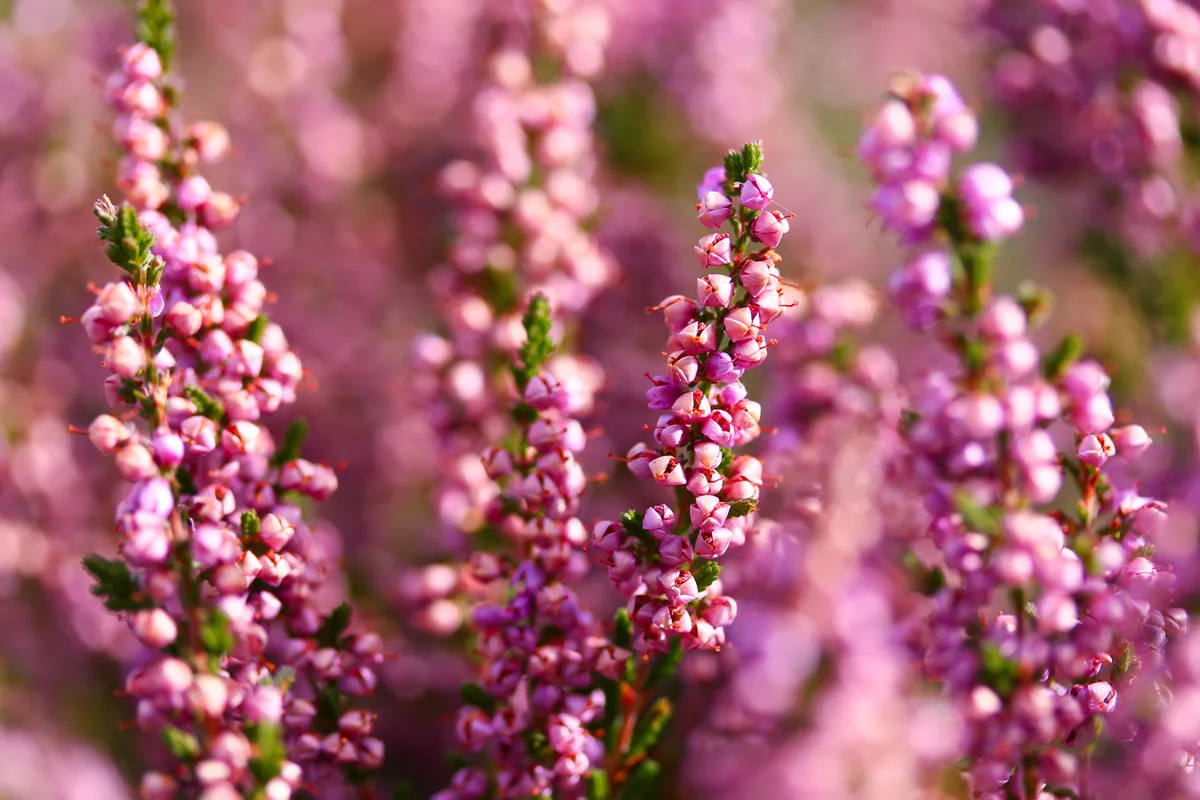
Bell heather, (Erica cinerea)
Bell heather (Erica cinerea) is often the first species to flower, from the end of May onwards.
It has intensely purple, bell-shaped flowers with four teeth, larger than those of ling, arranged in a spike along the main shoot and at tips of side branches. Its dark-green leaves with in-rolled margins grow in whorls of three with clusters of smaller leaves at their base. Drought-tolerant.
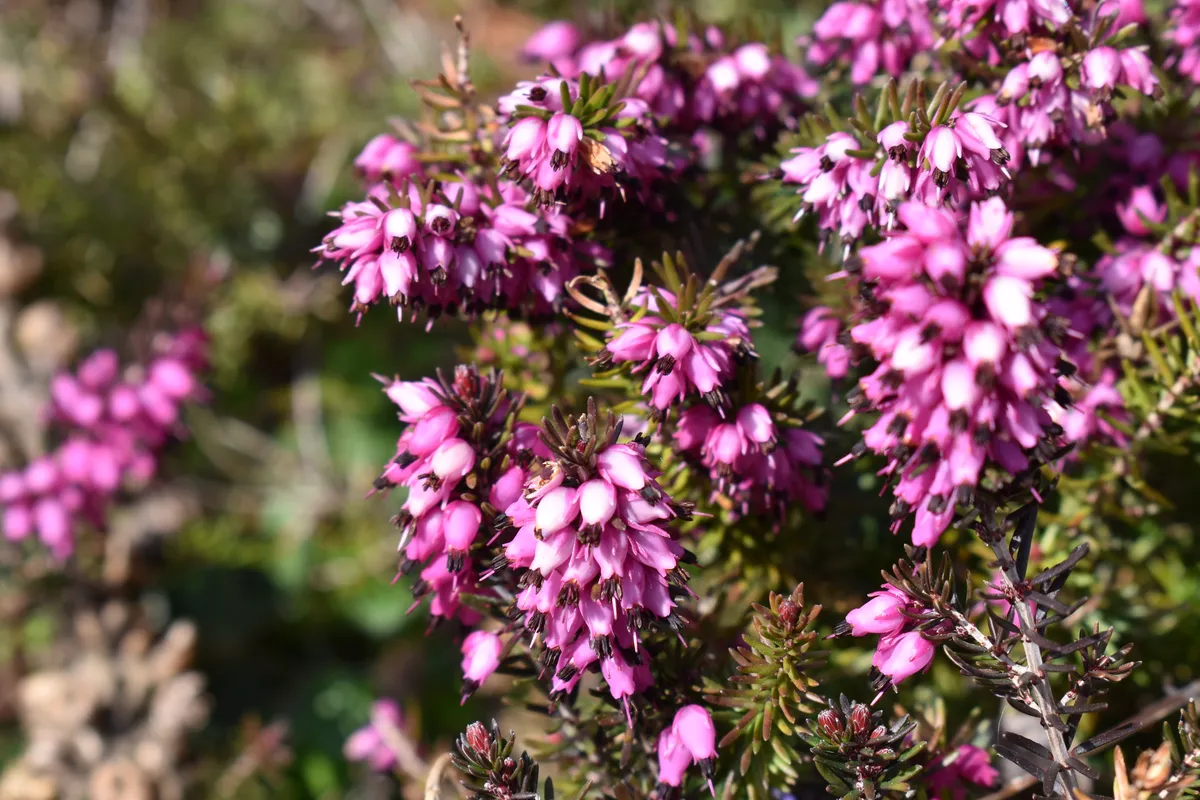
Cross-leaved heath (Erica tetralix)
Cross-leaved heath (Erica tetralix) is sometimes known as bog-heather because it favours waterlogged patches in higher rainfall areas.
Leaves have downy grey hairs and grow in whorls of four. Rose-pink, globular bells bloom at the shoot tips. It is often part of a specialised flora in wet moorland flushes, alongside sphagnum moss, sundew and heath spotted-orchid.
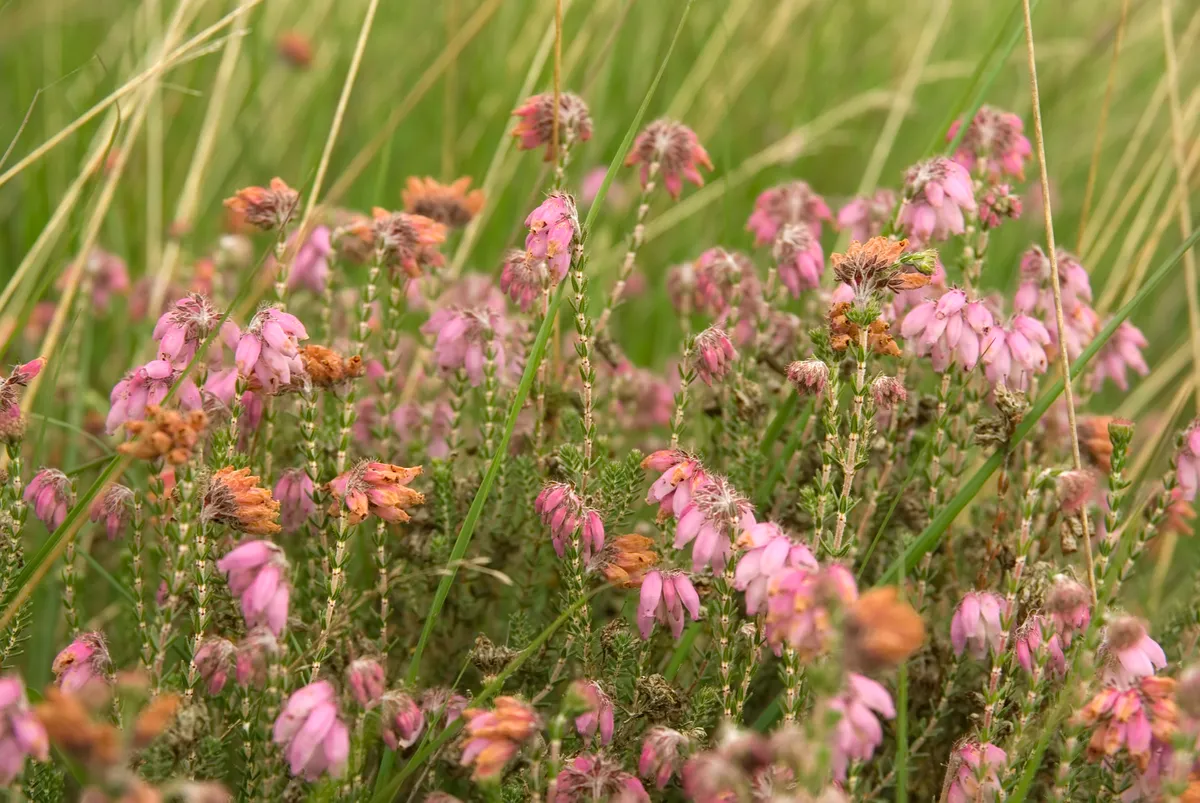
Heather distribution and habitat
Heather is abundant on heathland, moorland, woodland and bogs across Europe, particularly found in areas with acidic or peat soils.
Peatland covers around 20% of Scotland's land, so heather has been long associated with Scottish traditions. Although you can see heather throughout the year, its pink and purple flowers are particularly prevalent from August to October.

